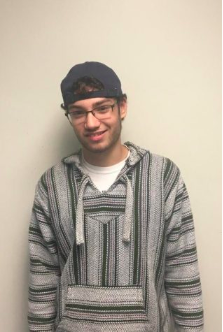Why Banning Guns Isn’t the Solution to Gun Violence in America
November 17, 2017
Following the recent attack in Texas, as well as many other mass shootings, many people have been calling for gun regulation, limiting citizen’s access to things like assault weapons, silencers, and large magazines. There is a seemingly neverending number of articles from major news outlets calling these regulations “common sense,” saying that there is no reason for the weapons and accessories to exist and are the root cause of all shootings in the county. And, on the surface, these regulations are seemingly no-brainers. To many, including myself, there is no need for anyone to have such weapons anywhere besides a licensed gun range. However, the problem with these reforms are that they very likely won’t actually change anything in terms of death rates due to guns.
According to the CDC, in 2014 there were over 33,000 gun related deaths in the US, or 10.5 deaths per 100,000 inhabitants. However, almost two-thirds of these are suicides, a rate that I was surpised to learn far exceeded my own expectations. Solely based on this fact, it becomes obvious that instead of trying to ban guns and gun accessories, which would not prevent any suicide attempts, those who truly desire a decline in these death rates should primarily be focusing on strategies for targeting these people and helping them.
Furthermore, the remaining one-third of gun related deaths, while consisting mostly of homicides, are still made up nearly entirely of non-mass shootings (mass shootings are defined by the FBI as four of more deaths in a single attack). Mass shootings are unquestionably horrific events that should be stopped at all costs, but in order to really use gun control to prevent the harm that the weapons can do, the focus must turn from the regulation of guns to better regulation of humans themselves.
The issue with gun control regulation is that people generally try only to regulate the guns themselves, not the people who use them. The aforementioned suicide rate, which also happens to be the single largest demographic of gun-related deaths in the country, is certainly a good place to start. According to World Health Organization, in the U.S. in 2015, there were 12.3 deaths per 100,000 inhabitants – and the rate is rising. Suicide is often the result of a major mental health issue, and these death statistics emphasise the need for preventing a person from taking their own life to be considered a national priority. People who may be at risk should be entered into serious, professional programs so that they can get the help they need.
No more money or effort should be thrown into preventing a silencer, a larger magazine, or any other gun modification that has not (and will not) prevent a person from using a gun on themselves. The stigma that has somehow been established, which makes talking about and dealing with mental health issues socially unacceptable, must immediately be ended. Suicide prevention must become a mainstream effort, as a person willingly taking their own life can cause more trauma and pain than nearly any other single event on the planet. However, it is not the fault of the gun that kills them; the best way to prevent these tragedies is to help the person that pulls the trigger.
The next largest demographic of gun deaths after suicide is homicides among young men, aged 15-34, which account for one in five gun-related deaths. Largely related to gang-violence, a seemingly obvious and yet overlooked solution to the high deaths rate from guns would be to better prevent these people from throwing their lives away. Research from the U.S. Department of Justice has shown that some of the best ways for a community to prevent gang violence are to strengthen families and schools, improve community supervision, train teachers and parents to manage disruptive youth, and teach students interpersonal skills. Putting emphasis on these strategies has nothing to do with altering anything about gun laws or anyone´s ability to carry them, and yet they have shown to be the among most effective to slow gun-related deaths, which is, after all, the ultimate goal of any sort of gun regulation.
One might say that smaller magazines or the banning of assault weapons could prevent the gang members from causing too much damage. But the reality is that too much of criminal activity involving guns is done with illegally acquired guns, a rate that would likely only become larger should the proposed legal restrictions be put into place. There is also no direct evidence that stricter gun laws lower crime rates.
The city of Chicago holds some of the nation’s tightest gun laws, and yet also has a reputation, and rightly so, as being among the most dangerous cities in the country. The problem arises, not coincidentally, from the issue of gangs in the “Windy City” – where there also happens to be a thriving illegal gun industry. Clearly, we cannot control the gang members using the guns, or what guns they use in crime. The only thing anyone has power over is trying to prevent the gang members from joining in the first place, which is exactly where the focus needs to turn.
There is no amount or type of gun regulation that will prevent the most common causes of gun-related deaths. For these rates to truly drop, we as a country must turn our focus from guns to the people who shoot them, as they are the ones who matter most, and these are the efforts that can enact real change in the country. If saving lives is truly the goal, which I believe it to be, then we, as a people, need to realize that gun regulation has not solved the issue. We need to move onto different solutions that may actually impact the rate of gun related violence in the U.S., to prevent not only mass attacks, but all forms of shootings.



